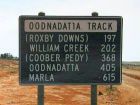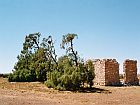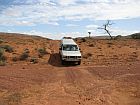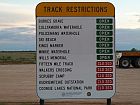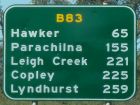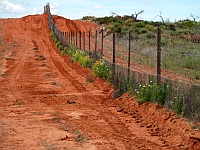
Cattle Drive Vacation
History of the great Australian Cattle Drive
The Great Australian Outback Cattle Drive was a once-in-a-lifetime adventure tour to explore the magnificent Outback in a fairly different way. The last cattle drive was held in 2010 along the Oodnadatta Track.
Visitors could step back into times when large mobs of cattle were moved long distances through Australia's harsh inland, listen to stories and tales from days gone by. Legendary drovers taught about Aboriginal culture & historic tracks.
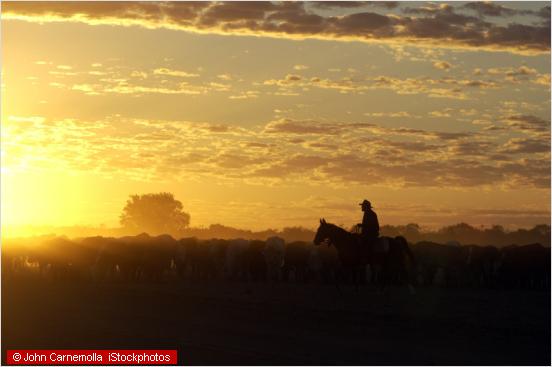
Cattle droving had been an important part of life in the Australian Outback for a long time, until first trains & later trucks took over the job of bringing cattle to the markets. But the spirit of the droving days still lives on.
Even today droving skills are still required to move cattle to better pastures during a drought.
Capital Cities
Accommodation
Special Interests
- General Facts
- Australian States
- Photo Gallery
- Climate & Bushfires
- Australian Wildlife
- Australian Opal
Rent A Campervan
Droving history
Cattle droving has been a fascinating part of Outback culture and legend. Drovers had a hard and demanding job. Moving thousands of cattle through the dry and dusty Outback was a challenge. The boss drover was responsible for men, horses and the cattle. After all, the beasts should arrive in good, or even better, condition at the markets.
The romance of Outback life has been kept alive ever since in movies, poetry and stories. "Clancy of the Overflow" by A. B. Paterson is one of the most famous poems.
How it all began - The first Australian Outback cattle drive
The idea to revive the culture of cattle droving was born over a bottle of rum by Eric Oldfield and Keith Rasheed. Both are well-known local characters in the South Australian Outback.
2002 was announced to be the "Year of the Outback", with more than 500 events scheduled across the country. The idea of getting 600 head of cattle and 170 horses on the track again became reality. The Great Australian Outback Cattle Drive 2002 became one of the most successful events of the year of the Outback.
The Great Australian Outback Cattle Drive 2002 took place along one of the oldest stock routes, the Birdsville Track. From Birdsville to Marree locals were excited and involved in this epic horse journey. Boss drover was Eric Oldfield. In 1949, at the age of 16, he took his first mob of cattle down the Birdsville Track. The last cattle drive on the Birdsville Track was in 1972, so the revival in 2002 brought back many memories to Eric.
For guests the 515 km (320 mile) journey was divided into several legs of different length. International visitors from all around the world merged with Australian city slickers to experience an unique adventure. Many guests were lost for words to describe their feelings. The beauty of the Outback, the friendliness of everyone involved, and the perfect organisation contributed to an outstanding cattle drive vacation. Truly a magical event!
The story continues - The Australian Outback cattle drive 2010
I wrote this article early in 2010 to introduce the event.
Rita's Outback Guide doesn't perform tours like that. I also don't know if there will be another cattle drive in the future.
I really cannot answer the requests I get by email.
Owing to the huge success of the first Australian Outback cattle drive, it was repeated as a stand alone event in 2005 (Birdsville Track) and 2007 (Oodnadatta Track).
Baz Luhrmann joined the 2005 event to get inspirations for his epic Outback movie "Australia".
The Great Australian Outback Cattle Drive 2010 invites you to live the adventure and join one of the six outstanding tours. Get ready for your cattle drive vacation of a lifetime.
You know I am fascinated by the Australian Outback, and especially the Oodnadatta Track means a lot to me.
You will see and learn a lot about the Oodnadatta Track during the next cattle drive event.
A typical cattle drive vacation itinerary used to be
- When you arrive at your Anna Creek campsite there is the official welcome. Then you settle into the camp and have lunch. After lunch you'll meet the droving and farrier teams, and are introduced to your horse. No worries, you don't need to be a perfect rider! Actually, riding skills are not required at all. You'll be matched to a horse and a group that suit your skills. Horses are ridden at walking pace anyway.
- Each morning after a hearty cooked Australian breakfast you'll be transferred to the horses. Cattle will be driven about 14 km each day, about 4 hours in the morning, and another four hours after the lunch break.
- Chat to the drovers during the day. They will tell you about the sights you come across which include remains of the original Ghan railway track and the Overland Telegraph Station. Even if the cattle drive tours don't follow the entire Oodnadatta Track, you will see some of its highlights. It is one of the most interesting Outback areas in my humble opinion.
- When you return to the camp after an exciting day, hot showers and cool drinks are waiting for you. A two course dinner either buffet style, or a camp-oven meal will be served each night. Enjoy the campfire, listen to Outback tales and get to know your group members. Don't forget to appreciate the milky way and the stars. You hardly find anything as amazing as the Outback night sky. It is awesome.
- Are you tired of sitting on horseback every day? No problem. On days 3 and 4 you can join complimentary coach tours to explore more highlights and history in the surrounding area. You can also take a scenic flight to Lake Eyre, the painted desert, or over the vast Anna Creek Station at an additional cost.
- The Australian cattle drive campsite provides a luxury tent village for guests, bathrooms, toilets & hot showers included. Accommodation is on a twin share basis, all camping equipment is provided. If you travel alone, you'll be matched to a person of the same gender. Tents have a canvas divider to give you privacy. A limited number of single supplements are available at additional cost.
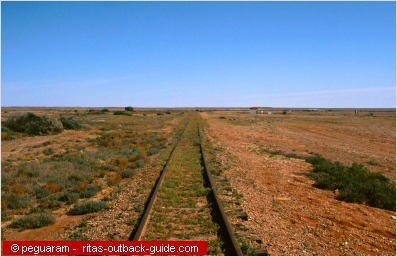
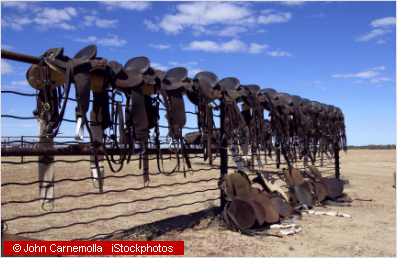
Useful tips for your cattle drive vacation
- What to bring? - Casual, comfortable clothes for warm and cold weather, a wide brimmed hat for sun protection, enclosed riding shoes, a rain-jacket. Personal toiletry & medication, a small first aid kit. Pack a dust proof soft bag, leave your valuables at home, and don't forget your camera!
- Travel insurance is strongly recommended, including cancellation insurance.
In case of severe illness of a participant on the cattle drive, the Royal Flying Doctor Service can take you to hospital. - Weather - August is still winter in Australia. Be prepared for sunny mild to warm days and cold nights.
- Money - There won't be any banking facilities in the cattle drive camp. As all meals and non-alcoholic drinks are included in the tour price, you only need money to purchase souvenirs, beer and wine (available at the camp), or optional scenic flights. You can use your credit card.
- Communications - You'll be out of reach for the five days of your tour. There is no mobile phone coverage in most Outback areas. Most Outback towns have public phones, but the cattle drive camp has no public phones. Remember, the camp is in middle of a vast cattle station. :)
However, for your own safety, the campsite is equipped with a HF radio to call the Flying Doctors. Staff on tour have satellite phones, but these are not for personal use. Isn't it great to be away from it all?
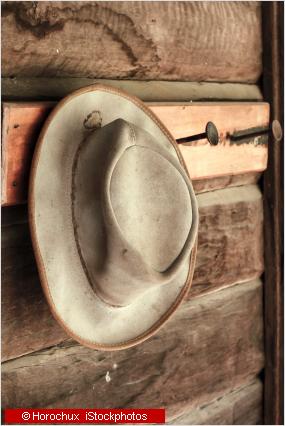
The Great Australian Outback Cattle Drive was owned and managed by Events South Australia, a division of the South Australian Tourism Commission.
Once again, this is an article about an event from the past. I'll keep it online because it tells about the wonderful droving history in Outback Australia.
There is the Harry Redford Cattle Drive that is held in Queensland during May each year.
